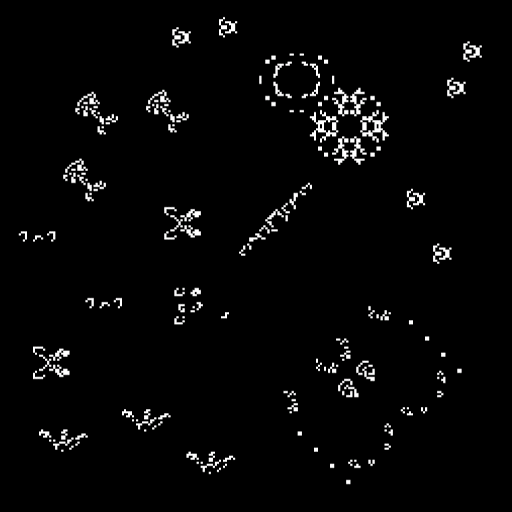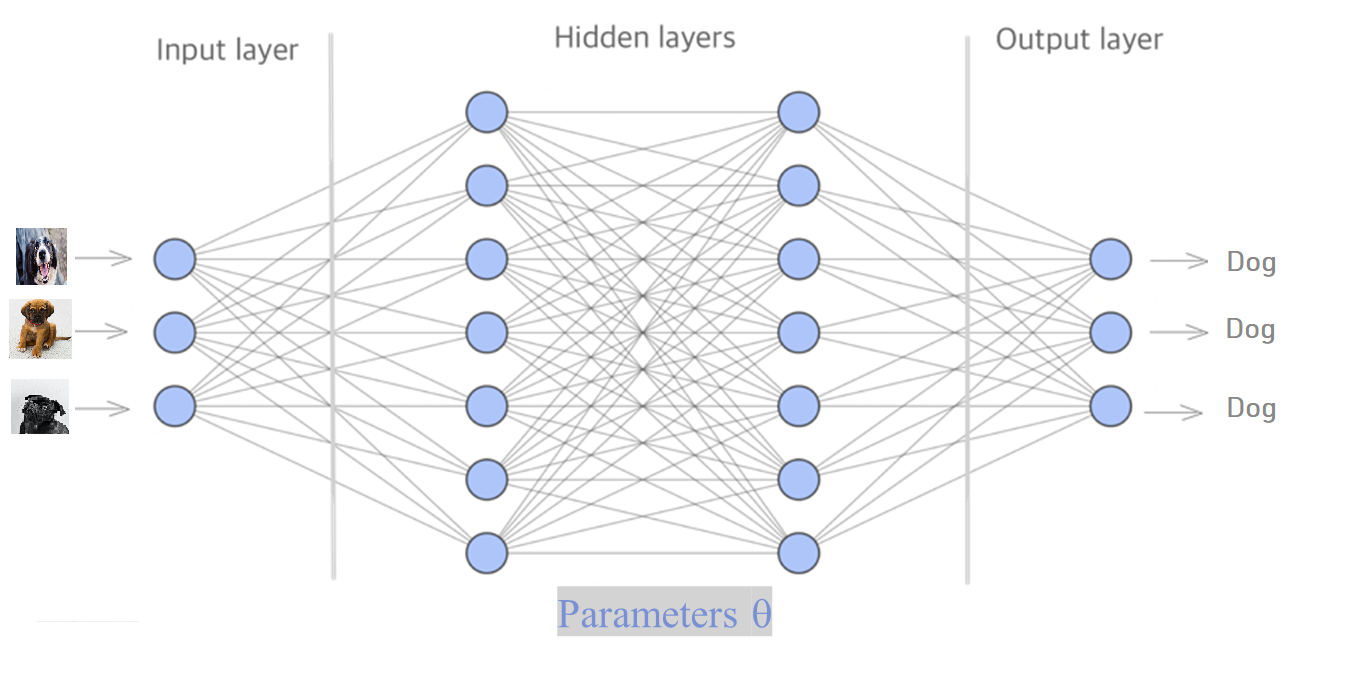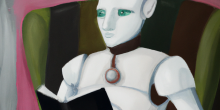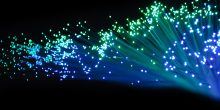Let me tell you how the next breakthrough in AI could be hidden in the dance of birds flocking in the sky.
One of the main building blocks of modern AI tools are artificial neural networks, abstract models inspired by the structure and functions of biological neural networks. These artificial neural networks enable machines to be trained and  learn
learn . But do they actually learn? Or do they just imitate something that looks like learning? This is a question that has sparked many debates and discussions. In this article, I will discuss some thoughts on this topic, and present my viewpoints on this question.
. But do they actually learn? Or do they just imitate something that looks like learning? This is a question that has sparked many debates and discussions. In this article, I will discuss some thoughts on this topic, and present my viewpoints on this question.
Neural networks and their associated field of Deep Learning are ubiquitous in today’s tech sector. Due to dazzling breakthroughs in recent years, such as beating the world’s best Go player, solving the decades-long protein folding problem, and of course the introduction of ChatGPT, Artificial Intelligence (AI) has become a commodity term in society at large as well. Progress appears to be dizzying, with the world’s largest tech companies pumping vast amounts of resources into the sector. Therefore, the following question arises: what does the future hold? Are current architectures, such as those powering today’s Large Language Models (LLMs) such as GPT-4, sufficient to build truly intelligent machines?
In order to answer this question, it is worth probing these architectures to determine potential pitfalls and limitations. For example, despite impressive results, machine learning models are still highly dependent on the data they are trained on, relying on large numbers of previously observed examples. The training process and subsequent model’s capabilities will be accordingly limited. This results in both a lack of flexibility for new problem settings and a reproduction of biases and patterns that are present in the data used to train the system. You can find many articles about these problems, for example, this article on the website of the United Nations Development Program about how stereotypes are inherited by AI systems like Dall E. It is questionable whether a system that isn’t able to change itself in response to changing conditions can truly be called intelligent. Therefore, the study of adaptive systems, both natural and artificial, could provide the solution.
A field of science that concerns itself with the study of adaptive systems is known as complexity theory. More specifically, it aims to understand phenomena exhibited by systems of many interacting components. Such phenomena comprise self-organisation, emergence, and adaptive behaviours, which can be summarised as collective intelligence. An example that illustrates the power of such systems is demonstrated by ant colony behaviour.

Left: Trajan’s Bridge at Alcantara, built in 106 AD by Romans. Right: Army ants forming a bridge, want to read more about ants building bridges? And also see a video of them doing it? Have a look at this article.
Before diving further into the topic you can have a look at this short, nice, and relaxing video about emergence, made by Kurzgesagt.
Natural intelligence vs artrificial intelligence
Through the coordination of a large number of individuals, ants are able to perform a variety of tasks. One such task is the construction of bridges for terrain traversal. When compared to the stone (or steel) bridges built by humans, ant bridges exhibit remarkable flexibility. The width and length of the bridge can be adapted to the gap that needs to be traversed. Human bridges, on the other hand, are built for one specific location only. If it were to be taken out of its context and placed elsewhere, the bridge could no longer fulfill its intended purpose. Current deep learning architectures resemble stone bridges in this regard, rather than ant bridges. Once trained, the learned parameters of the neural network remain statically fixed. This rigidity leads to a lack of robustness, leading to failure in the face of changing data. For example, an artificial agent trained on a given video game training data set will fail at the game if a small number of pixels are modified during playtime. This has been investigated by researchers from the University of Singapore, who analyzed various methods to trick AI models. They have shown that even changing a few pixels can lead to mistakes.
Furthermore, a neural network has a very strict expectation of input structure. If it is trained on a certain number of inputs, pixels in an image for example, it cannot take a different number of pixels as input without first being re-trained. A bridge formed by ants, on the other hand, has much less rigid assumptions about the environment it perceives and acts within. To overcome this shortcoming we need to bridge the gap between artificial intelligence and collective intelligence. Here again, the field of complexity science offers adequate tools. This intersection of disciplines could be referred to as AI/CI (Not to be confused with the famous Australian rock band).
Simulated Collective Intelligence
Rather than employing real-world biological systems, such as ant colonies, we make use of simulated systems within virtual environments. Complex phenomena exhibited by collections of biological agents can often be captured by relatively simple rulesets in a simulated setting. For example, bird flocking behaviour has been simulated using boids.
Three simple rules govern the behaviour of each virtual bird:
- Separation: Avoid collision with other flockmates
- Alignment: Steer towards the average direction of local flockmates
- Cohesion: Steer towards the average position of local flockmates
This is sufficient for the system to exhibit the emergence of flocking behaviour, where large numbers of individuals are coordinated in 2-dimensional or 3-dimensional space.

Left: Photograph of real birds exhibiting flocking. Right: 2D boids simulation. Image taken from Le Monde du PC.
While this is an intuitive introduction to simulated collective intelligence, there is another example that is even simpler, yet it allows the creation of fascinating patterns. Imagine a field of squares, like the checkerboard of a chess game. Think of a chess board where the colours are not ordered, but any square could be black or white. At the same time, the squares can change colour. Just like the behaviour of individual birds in our previous example, the colour of each square is controlled by simple rules. More specifically, the rules tell the squares whether they should flip from black to white, or vice versa, based on the surroundings of each square. I hear you say “Wait a minute, I thought this was supposed to be simple!” Okay, here’s an example. The rule book says:
- If a white square has less than 2 white neighboring squares, it will turn black.
- If it has 2 or 3 neighbours that are white, it will stay white.
- If a white square has more than 3 neighbours, it will turn black.
- If exactly 3 white squares surround a black one, the black one will turn white.

S. Conway’s Game of Life by Sam Twidale. GIF used with explicit permission from author.
Also simply known as Life, its name is inspired by the fact that the squares, or cells, can live, reproduce, and die. Therefore, white and black represent life and death, or more simply on and off.
The rules that govern how a cell responds to its neighborhood, such as the ones outlined above, are called update rules. Given these rules, we can begin with any pattern of cells. From this starting point, the grid will start changing the values of its cells, some flicking on and some flicking off. This changes the starting pattern, so that each cell is once again in a new neighborhood, and so on for as long as the simulation runs. At each time step, the local neighbourhood determines the on/off patterns of the grid, evolving the system over time. This is an example of emergent behaviour arising from the local interactions of cells, determined by the update rules. Such emergent behaviour includes the formation of large patterns that persist in time, known in the community as “spaceships” or “demonoids”, among many others. Enthusiasts are actively exploring all the possible “life forms” existing in this virtual microcosm. Here is an interactive example of a spaceship!
Conway’s Game of Life is an example of emergent behaviour arising from local interactions
Cellular automata are key in helping researchers understand the complexity of the real world. Take the example of ants forming a bridge. Each ant on its own cannot see the full picture of the bridge, it is only aware of what its neighboring ants are doing. In this sense, its neighborhood controls how the ant will behave. As a collective, the ants are able to create an emergent, functional structure, much like the spaceships of Conway’s Game of Life.
Artificial Neural Networks
The origins of deep learning trace back to the first half of the 20th century, when neuroscientist Warren McCulloch and mathematician Walter Pitts conceptualised a simplified model of the human neuron: The McCulloch-Pitts neuron. This architecture was first implemented in 1958 by Frank Rosenblatt, an American Psychologist. It appears fitting that neural networks, the second component of our AI/CI dichotomy, were also inspired by a complex biological system from the very beginning.
Rosenblatt’s Mark I Perceptron was initially designed to function as a “photo-interpreter”, foreshadowing the image recognition capabilities of modern neural networks. However, it was not until the 2010s that neural networks, inspired by such early architectures as the Perceptron, truly entered the mainstream following significant enhancements in complexity and performance. These models process inputs through a series of neural activation patterns, culminating in an output specific to the task—for example, identifying a dog in an image and labeling it accordingly. The learned weights in a neural network encapsulate the 'concept' of an image, which is understood through low-level features such as lines, edges, textures, and colors.
In certain advanced generative models like Generative Adversarial Networks (GANs), invented by computer scientist Ian Goodfellow and presented in their seminal article Generative Adversarial Nets, once a network has been trained on such concepts, it is possible to use the model in reverse to generate images from labels, effectively synthesizing new visuals based on learned data. This generative component has a strong connection to our following example, where we explore biological re-generation, bringing together collective intelligence and artificial intelligence.
AI/CI: Neural Cellular Automata
Now that we have introduced both the AI and the CI, it is time to combine them in a meaningful way. Let’s consider a scenario where artificial intelligence converges with biological growth and regeneration, introduced by Mordintsev et al. We revisit the realm of images. It isn’t too much of a stretch to imagine a digital picture as a grid of cells, formed by the individual pixels of the image. This should ring a bell, reminding us of cellular automata, also acting on grids. Recall the on/off state switches flickering across the grid through time. Now, instead of simple on/off values for the cells, each pixel is composed of three primary colour channels: red, green and blue. For a given pixel, each of the three channels has a certain value between zero and one (A digital image is simply a grid of many pixels, each of which has differing values for the three primary colours).
For example, a low-resolution drawing of a gecko on a white background has a distinct shape and colour and can be captured with relatively few pixels. This is no ordinary picture of a gecko, however. It is a sort of digital life-form, since its pixels, or cells, belong to a special kind of cellular automaton. This means that if something happens to a part of the gecko, changing the values of some pixels on one of its body parts, the neighboring pixels will also react to this change. For example, introducing a “wound” to the gecko by destroying several pixels will lead to a regeneration of the damaged area, based on a correct set of update rules and the local neighborhood interactions. The twist is that in this case, the update rules are learned by a neural network to achieve the desired image. This regenerative behaviour based on collective, localised information is a prime example of the adaptive behaviour of collective systems. It demonstrates how ideas from both complexity science and deep learning can be symbiotic, allowing for novel methods with unprecedented capabilities. An interactive demo of the neural cellular automaton exhibiting regeneration can be tried here.
Left to right: Image of a gecko regenerating as a neural cellular automaton. Image taken from Distill (an online academic journal in the area of Machine Learning).
Virtual Agents and Digital Societies
Another exciting intersection of the two disciplines comes in the form of multi-agent reinforcement learning. The field of reinforcement learning (RL) is dedicated to training artificial agents that learn via interactions with their environment in virtual “playgrounds”. The agents receive feedback in the form of rewards and penalties in response to correctly and incorrectly performed actions, respectively. Typically, single or few agents are trained within the context of a single simulation, so some form of limited interaction is possible. However, traditional reinforcement learning doesn’t simulate enough agents for collective intelligence, such as ant colony coordination, to emerge. Some more recent works have explored multi-agent RL settings containing vast numbers of agents. For example, Lianmin Zheng, a PhD researcher from Berkeley University introduced MAgent. MAgent allows for the simulation of hundreds to millions of agents within a single environment, allowing an in-depth exploration of complex social behaviors such as the emergence of societal hierarchies and languages. This vast number is critical for studying phenomena that only emerge from large-scale agent interactions. You can watch this nice video to see how MAgent works.
In MAgent, each agent operates within a highly configurable grid-world environment where they can move, interact, and evolve based on the actions of their neighbors. An important difference to the grids of cellular automata is that the agents live on the grid, freely moving around it. The platform supports a range of scenarios from cooperative tasks where agents must work together to achieve common goals, to competitive settings where they fight for limited resources. The real-time, interactive nature of MAgent allows users to directly observe and tweak these interactions, providing a powerful tool for studying the collective behaviors of these micro-societies.
We have touched upon the profound implications of merging collective intelligence with traditional deep learning frameworks. The rigid, static nature of current deep learning architectures, much like the unyielding Roman bridges, limits their application in dynamic, real-world environments. By integrating principles of self-organization and adaptability observed in natural systems—exemplified by ant bridges and flock behaviours—we move towards more versatile and resilient AI systems. This includes models that can self-regulate, self-repair, and autonomously improve over time through interactions with their environment. In doing so, artificial systems may start to closely resemble the complexity and adaptability of natural systems. There is a lot to learn from systems of collective intelligence, so let’s help our machines learn from them as well!
This article was based on the original post Marcello wrote for his blog.








